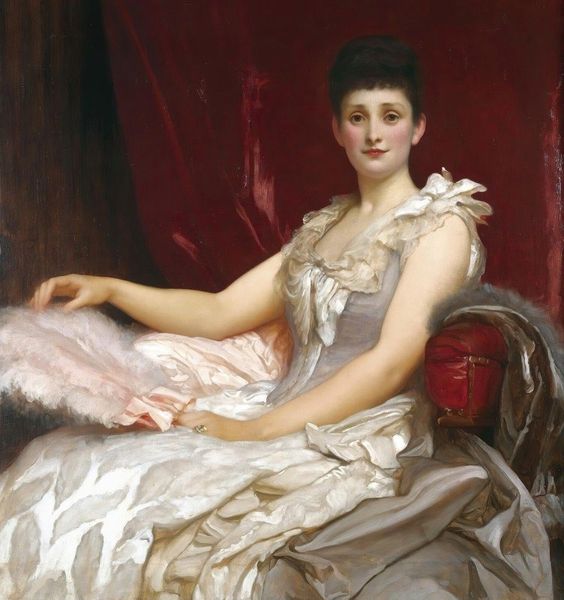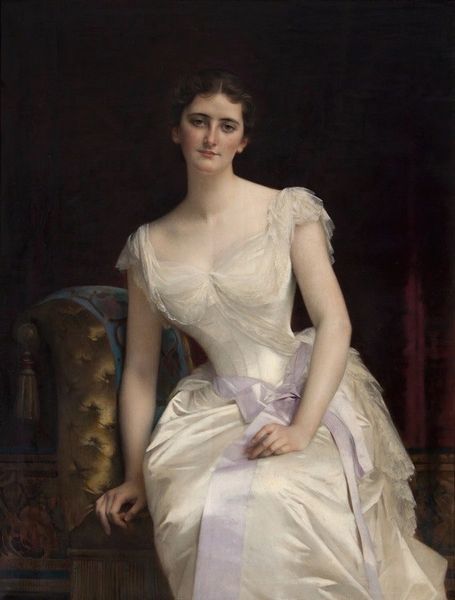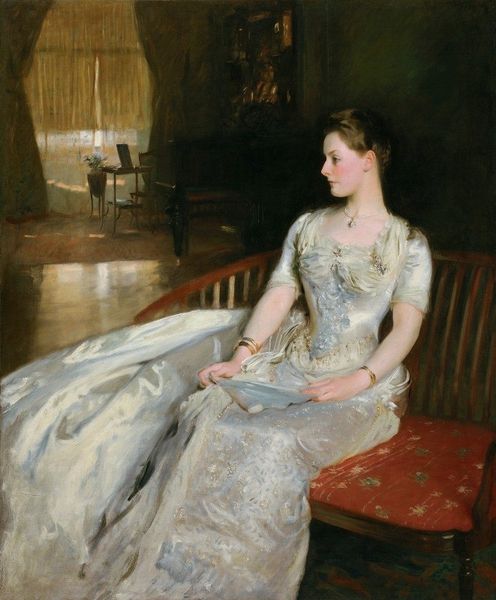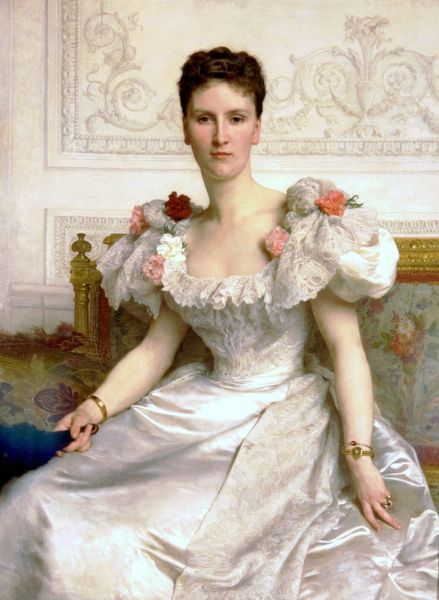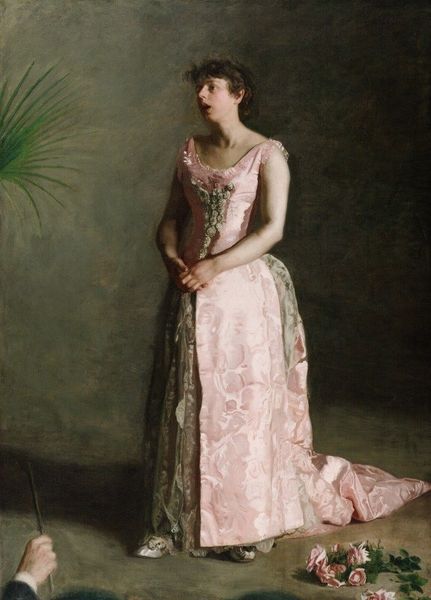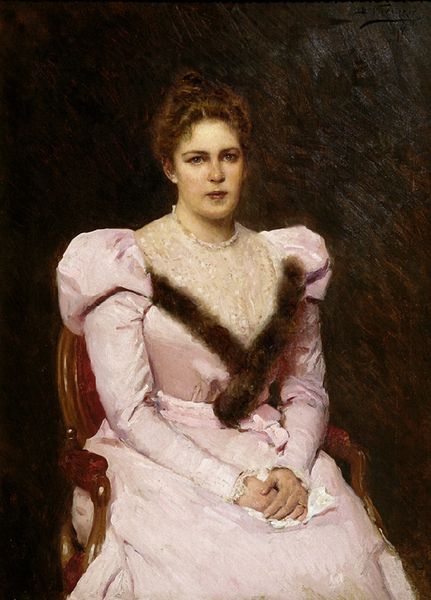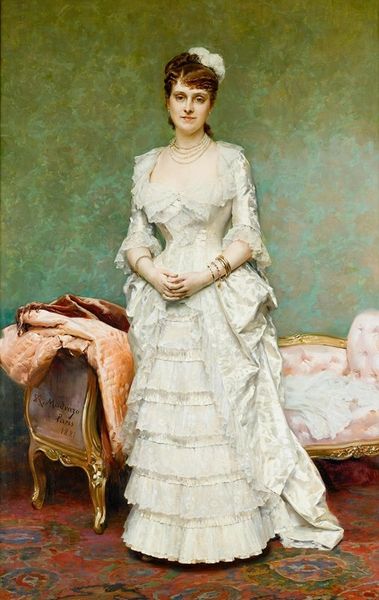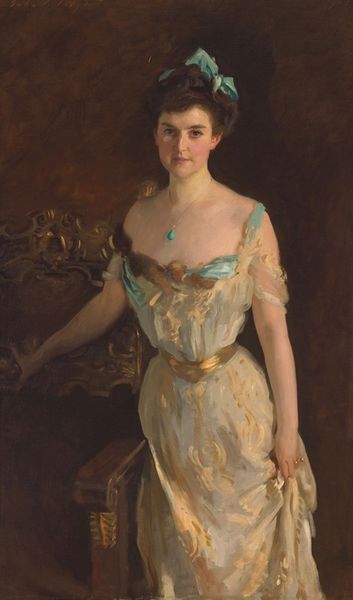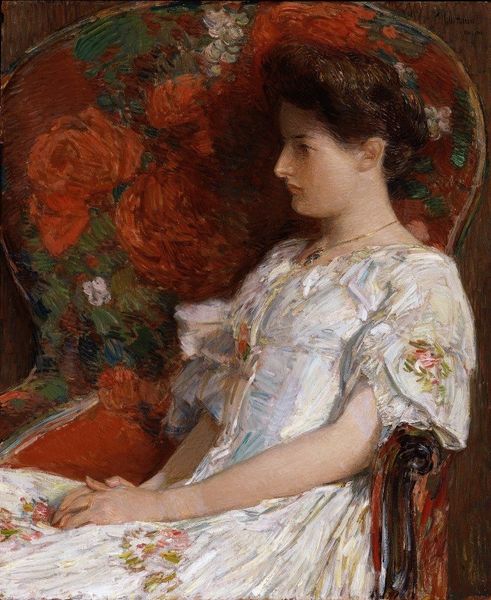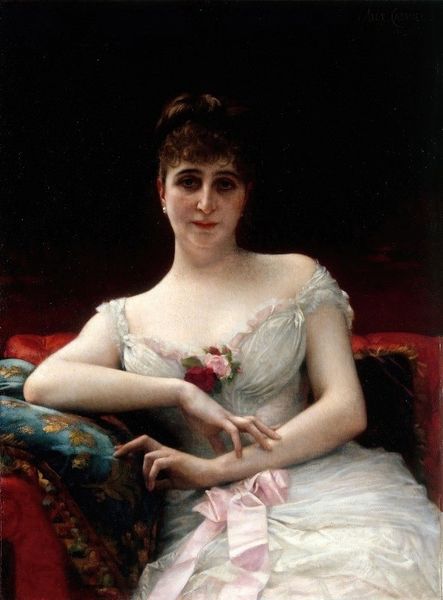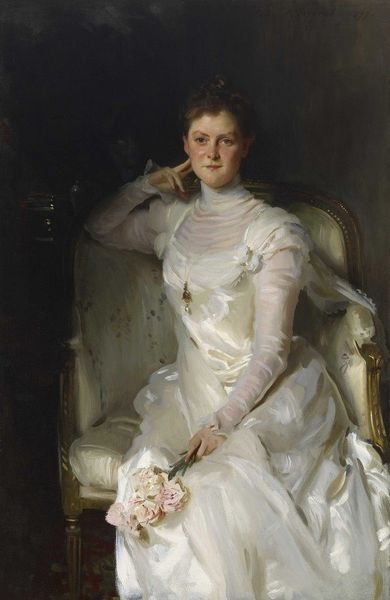
painting, oil-paint
#
portrait
#
figurative
#
painting
#
oil-paint
#
academic-art
#
realism
Copyright: Public Domain: Artvee
Editor: This is Alexandre Cabanel’s "Olivia Peyton Murray Cutting, Wife of William Bayard", painted in 1887. The oil paint gives it a soft glow, but I find the overall mood rather restrained, despite the beautiful pink gown. How do you interpret this portrait? Curator: It's a fascinating glimpse into the aesthetic values and social dynamics of the late 19th century. The choice of Cabanel, a celebrated academic painter, speaks volumes. It signals the family’s desire for legitimacy and elevation within the established social hierarchy. Editor: Legitimacy, how so? Curator: Well, Academic art, at this time, was more than a style. It was an institution with its own rules, venues, and system of patronage, often reflecting and reinforcing the values of the elite. Commissioning a portrait from someone like Cabanel publicly demonstrated the family’s adherence to those values. Notice how the sitter's reserved posture contrasts with the opulent details of her dress and surroundings, revealing how clothing and setting established one’s status. Editor: It's like saying something without saying anything at all, right? How appearance creates a clear social standing! Curator: Precisely! Even the fan she holds becomes a symbol within a highly coded visual language. A tool for conveying social standing through symbolic luxury. Also, note how Cabanel used dark colors to establish that hierarchy. What statement do you think these colors try to express about this family and their relationship with the surrounding cultural context? Editor: Maybe an echo of mystery... I see now how seemingly straightforward portraits can reveal subtle insights into societal structure. Curator: Absolutely, these artworks were often crafted for the very public space of the home. They were meant to display not just likeness, but aspirations of identity in that cultural moment. These objects are more than portraits, they are important indicators of how class operates!
Comments
No comments
Be the first to comment and join the conversation on the ultimate creative platform.
